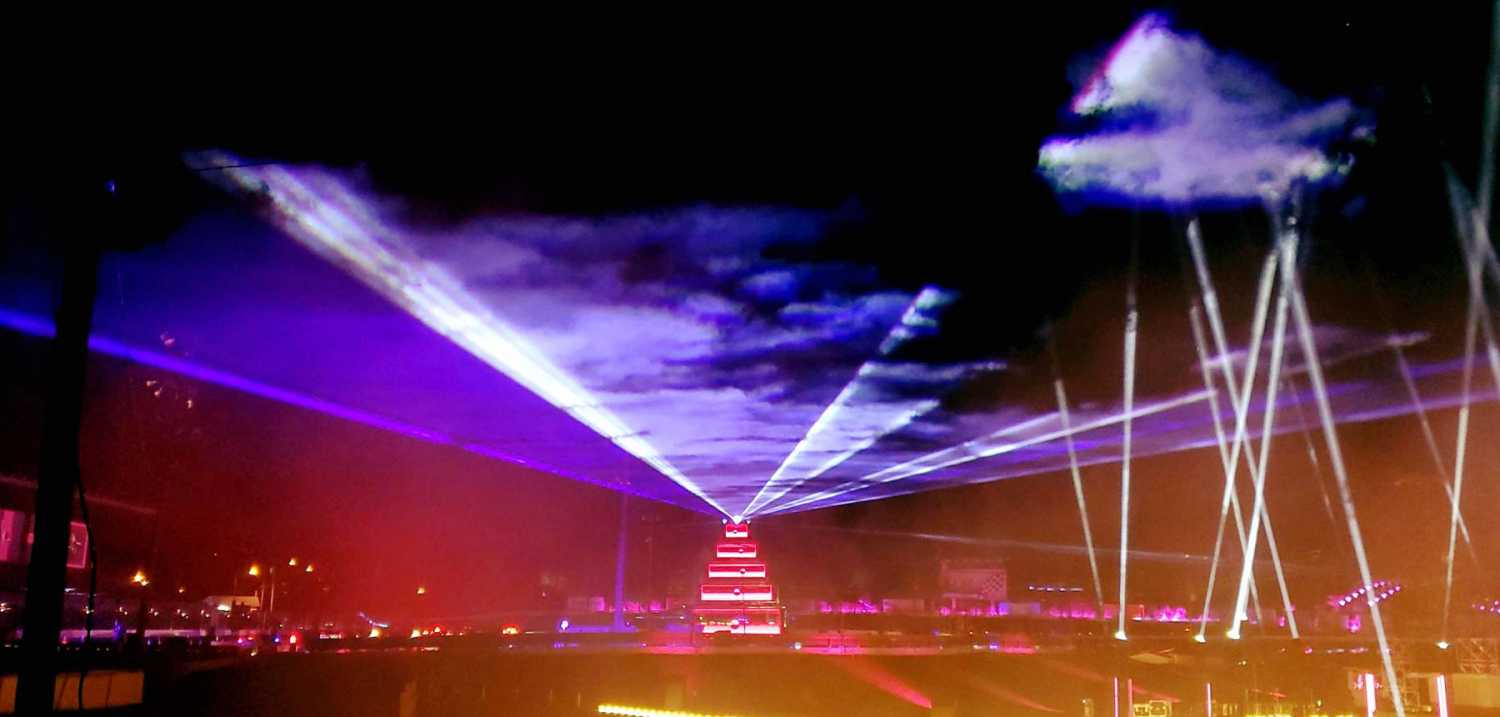ChamSys makes magic for Fairgrounds’ laser show
- Details

Entering the track’s winding two-mile course, visitors were greeted by a dazzling mosaic of colourful images created by a sea of sparkling lights, along with over 2,000 video panels and 400ft wide projection mapped surfaces. Tying this panorama together was a matrix of laser light that seemed to envelop the entire course in its glow.
Dustin L Derry programmed and ran the laser show on his ChamSys MagicQ MQ500 Stadium console. “This was an exciting project to be involved with,” said Derry, the owner of Stonewolf Studios. “Erik Anderson of Eamotion and Cour Designs, the creative force behind this project invited me to participate and I jumped at the chance to work with such a highly regarded team on something that has never been tried before, at least not on this scale. The future potential of this concept is incredible.”
Derry programmed the show “as I would any other laser project.” Putting his show on a 60-minute timecode loop, he had 825 unique laser lighting cues, which were triggered via a single timecode stack. (For some of the more complex sequences, he had some cues reference other smaller cue stacks.)
Describing the MQ500 as “the workhorse” of his 24-universe (one for each laser) show, Derry recounted its role in his work. “I used the MQ500 along with X-Laser Mercury for programming the show in my home studio, and the interface between the two was perfect,” he said. “MagicQ was the primary ‘brain’ in my entire show.
“The Timeline Editor View in the software was especially important to me in this project,” continued Derry. “Being able to compare the audio peaks to my cues made lining up the timecode incredible easy. Before this feature was available, I would always work in Reaper to generate my timecode track. This new way of working allowed me to save time and skip that step.”
Among the highlights of the show for Derry and his Stonewolf Studios team, which included Sarah Lackner and Andrew Stratton, was what they called “Motif”, which he describes as “a giant blue sheet over the entire site that had four white beams falling out of the centre on repeating runs in the strings”.
In addition to his main console, Derry had a MagicQ MQ80 at the site. This console served dual purposes, functioning as a portable programming/focus desk that was rolled around on a road case during late night tech sessions to check safety and programming, as well as being available as a backup system, something that was not need.
“Everything went extremely well in this project,” said Derry. “In addition to ChamSys, I have to give a shout out to Erik Anderson and the Eamotion/Cour team, as well as Adam Raugh and Andrew Berry of X-Laser.”
















